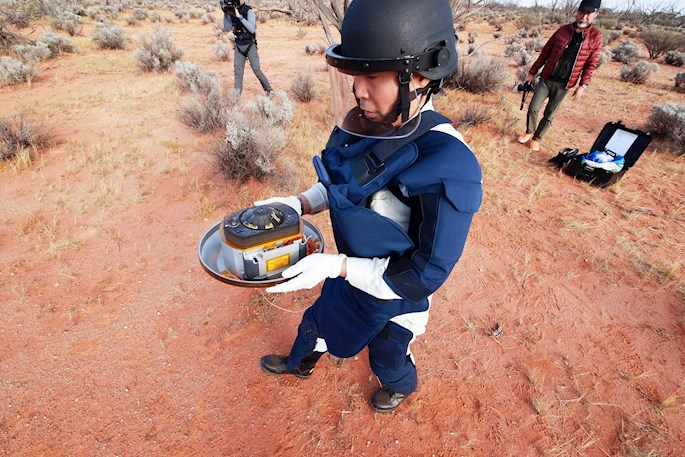Hayabusa-2 capsule with asteroid samples arrives in Japan
Published : 08 Dec 2020, 12:01
Samples of an ancient asteroid collected last year by a Japanese space probe arrived in Tokyo on Tuesday, days after a Hayabusa-2 capsule carrying them landed in a desert area in southern Australia, reported EFE-EPA.
According to images broadcast on television, the re-entry capsule containing surface dust and material from the Ryugu asteroid arrived on a plane that landed at Haneda airport.
The capsule was later transported to the headquarters of the Japan Aerospace Exploration Agency (JAXA).
The samples were taken from the asteroid, located 340 million km from Earth, last year by the space probe Hayabusa-2, launched in 2014.
The probe, with a weight of about 600 kg and spanning 1.6 meters on its largest side (without the solar panels extended), was launched on Dec. 3, 2014.
It is the successor to another that brought samples from the asteroid Itokawa to Earth in June 2010.
Hayabusa2 was in the vicinity of Ryugu for a year and a half. It first landed on its surface on Feb.22, 2019, and again on July 11, 2019.
The probe detached from the capsule last Saturday as it approached Earth after a journey of some 5.2 billion km.
Scientists will open the capsule in the next few days in a JAXA laboratory.
Scientists will analyze its contents to look for possible signs that indicate how the solar system came into form.
Among the samples taken by Hayabusa2 are underground remains of Ryugu, which have not been affected by external elements.
JAXA scientists hope that the samples can provide valuable leads in investigating the origins of the solar system and, beyond, the origin of life.
"We sealed the capsule very tightly, but still gas samples can be lost easily," Masaki Fujimoto, deputy director-general of JAXA's Institute of Space and Astronautical Science, told reporters last Friday.
"We don't want to miss anything."
The asteroid is about 4.6 billion years old. It is believed to have gone through minimal changes since the formation of the solar system, so it could be an example of meteorites that may have impacted early Earth.
Ryugu, the name of a magical undersea palace in Japanese folklore, is about 900 meters in diameter and slightly cubic and considered among the oldest bodies in the solar system.
Scientists believe that Earth was too close to the sun when it was formed for water to condense, but once it cooled, both water and organic materials were brought to the planet by asteroids like Ryugu.


